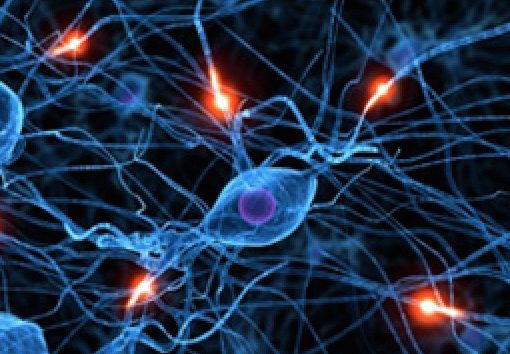During intake at a county jail, Mr. Simpson reports a history of seizures that began 25 years ago when he was a pedestrian struck by an 18-wheeler. He reports that he has not taken medication in a few years because he has no insurance. He also admits that he drinks “some”. No other medical information is available. A few days into his incarceration, as he is withdrawing from the alcohol, he has a seizure.

Seizure disorders are common among the incarcerated population. In fact, the prevalence of seizures is up to 4 times more likely in this patient group than in the general population. Seizures may occur due to epilepsy, past head trauma, alcohol and drug abuse or withdrawal, drug interactions, infection, and even for no physical reason such as psychogenic nonepileptic seizures (PNES). Correctional nurses have an important role to play in determining the cause and best treatment for a seizure disorder by obtaining a detailed history from their patients, and conducting thorough and appropriate assessments before, during and after a seizure.
A Challenging Diagnosis
Tracking down the likely cause of seizure activity is important for determining the treatment plan. Unfortunately, a correctional patient may simulate seizure symptoms for secondary gain such as a lower bunk, special work detail, or food with medication. This can lead staff to disregard any reports of seizure activity as suspect. Yet, with a higher probability of actual seizure disorder in this population, correctional nurses must approach all reports of seizure activity seriously.
Patient Safety Paramount
When seizure activity is present, nursing staff must first and foremost keep the patient safe. Any potentially hazardous objects should be moved away from the patient. Avoid restraining the patient during the seizure as this could cause injury. Monitor the airway during and after a seizure. Do not place any object in the patient’s mouth. A patient with active seizures needs close monitoring until treatment successfully brings the seizures under control, which may be a week or more on medication. This may mean a protective housing unit or more frequent monitoring by clinical and security staff.
Assessment Findings Critical
Nurses are often the health care professional on the spot to witness seizure activity. Assessment of the seizure characteristics is crucial for effective diagnosis and treatment. The length of the seizure and its characteristics should be documented, as should any post-seizure signs and symptoms. A thorough neurological assessment should be completed. It is not the nurse’s responsibility to diagnose the patient or determine if they are not having a “real” seizure. The provider should be contacted with the patient’s history and assessment findings. Based on this consultation, a treatment plan is developed that may include patient monitoring, medications or sending the patient out for further evaluation.
Management with Medication
Many medications are available for treatment of seizure disorders. Choices may be limited, however, based on the institution formulary. Here is a brief list of common seizure medication with side effects, interactions, and any specific monitoring needs. Keep a current drug book handy when administering medications for a quick check of unfamiliar options.
Carbamazepine (Tegretol)
- Side effects: Bone marrow suppression, liver toxicity, gastric upset
- Interactions: Erythromycin, Cimetidine, Fluoxetine, Isoniazid, Phenobarbital, Phenytoin
- Monitoring: Drug level*, CBC and Hepatic Function Panel (every 6 months)
Gabapentin (Neurontin)
- Side Effects: Fatigue, viral infection, ataxia, nystagmus, dizziness, drowsiness, sedation, fever, tremor, blurred vision, diplopia, peripheral edema, xerostomia, amblyopia, and irritability
- Interaction: Allergy medication, Antacids, Hydrocodone, Morphine
- Monitoring: None
Lamotrigine (Lamictal)
- Side Effects: Sedation, ataxia, headache, Stevens-Johnsons syndrome, toxic epidermal necrolysis
- Interactions: Carbamazepine, Phenobarbital, Phenytoin, Valproic Acid
- Monitoring: None
Levetiracetam (Keppra)
- Side Effects: Sedation, incoordination, anemia, leucopenia psychosis, gastric upset; weakness, ataxia
- Interactions: Carbamazepine
- Monitoring: CBC (every 6 months)
- NOTE: Must withdraw gradually
Phenobarbital
- Side Effects: Sedation, ataxia, confusion
- Interactions: Phenytoin, Valproic Acid
- Monitoring: Drug level*
Phenytoin (Dilantin)
- Side effects: Gum hyperplasia, hirsutism, ataxia, incoordination, confusion
- Interactions: Many including Carbamazepine, Cimetidine, Phenobarbital, Fluoxetine, Isoniazid, Sulfonamides, Warfarin
- Monitoring: Drug levels*
Topiramate (Topamax)
- Side Effects: Psychomotor slowing, sedation, weight loss
- Interactions: Carbamazepine, Phenobarbital, Phenytoin
- Monitoring: Complete metabolic profile (every 6 months)
Valproic Acid (Depakote)
- Side Effects: Bone marrow suppression, liver toxicity, gastric upset
- Interactions: Carbamazepine, Cimetidine, Phenytoin, Phenobarbital
- Monitoring: Drug level*, CBC and Hepatic Function Panel (every 6 months)
* The frequency of drug level monitoring is based upon evidence-based guidelines, provider preference and patient presentation, but often takes place in conjunction with seizure activity or chronic care visit schedule.
Seizure Medication and Abuse
There is potential for abuse of most seizure medications, but phenobarbital and gabapentin seem to be particularly desirable for diversion. Fortunately, with so many other options available, these medications need not be prescribed. As with all medications, nursing and security staff need to work together to ensure that medications are taken by the patient. If highly attractive medications like phenobarbital or gabapentin must be administered, diversion can be avoided by crushing and floating on water for administration.
Do you have patients with seizure disorders? Share your experience in the comments section of this post.
Leave a Reply